THE DEPARTMENT STORE
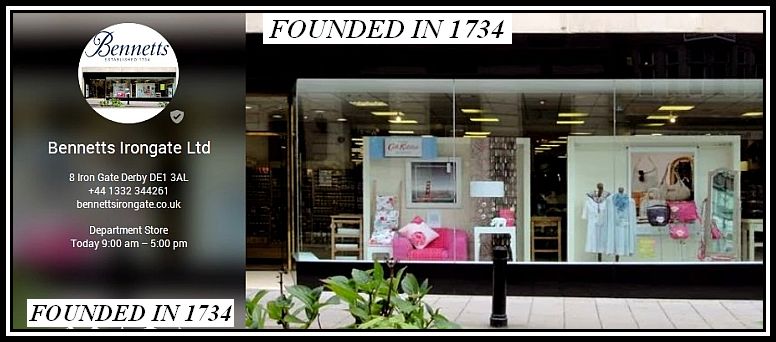 Bennetts, Iron Gate, Derby
Bennetts, Iron Gate, Derby
Considered to be the first Department Store Founded in 1734 and still open for business
-oOo-
THE DEPARTMENT STORE
INTRODUCTION
What is a department store and how was it that it appeared, develop and evolved into the variety of establishments that we find today in High Streets, City Centres and Shopping Malls the world over?
-oOo-
A Department Store is a building dedicated to the selling of consumer goods to the public.
-oOo-
Such stores offer a variety of goods to customers which are arranged into distinct areas, referred to as departments. Over the years, the goods available for sale to the public have increased in both range and variety and now encompass everything and anything that a customer might possibly need or want. Today it is possible to purchase clothes, toiletries, cosmetics, gardening materials, sporting goods, home appliances etc etc etc under one roof. However, some stores have become renowned from a certain degree of specialization while others for offering goods at discount prices whereas most stores offer a general discount of prices at particular times of the year.
Today the traditional department store suffers from competition from its modern equivalent, the Big-Box store. This type of store is most often a large box-like retail building lacking decoration and of a single storey. Such establishments are generally part of a group or chain of similar stores owned by the same company.
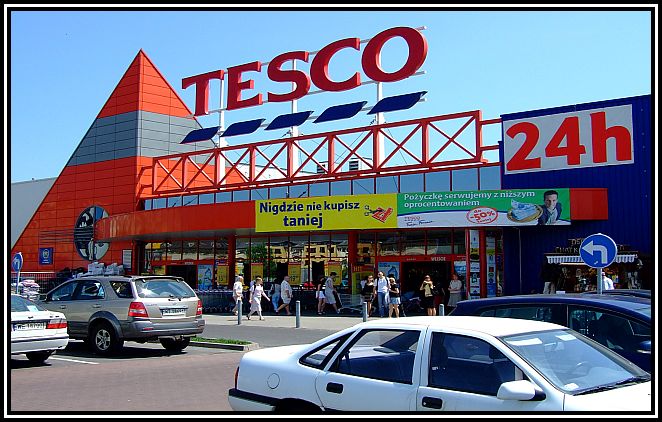 Tesco, a Big-Box Store, or Hypermart, or Megastore or Superstore
Tesco, a Big-Box Store, or Hypermart, or Megastore or Superstore
But let us not consider the modern day equivalent of the department store at this time. Instead let us limit ourselves to the traditional and elegantly attractive buildings that were carefully designed and well-maintained where once shopping could be a pleasurable experience for those who wandered through these distinct emporia.
-oOo-
How was it that the department store first came into being? At the beginning of the 19th Century with the coming of the Industrial Revolution, huge numbers of people moved to the areas of industry that sprung up in cities and towns seeking work in the newly built factories.
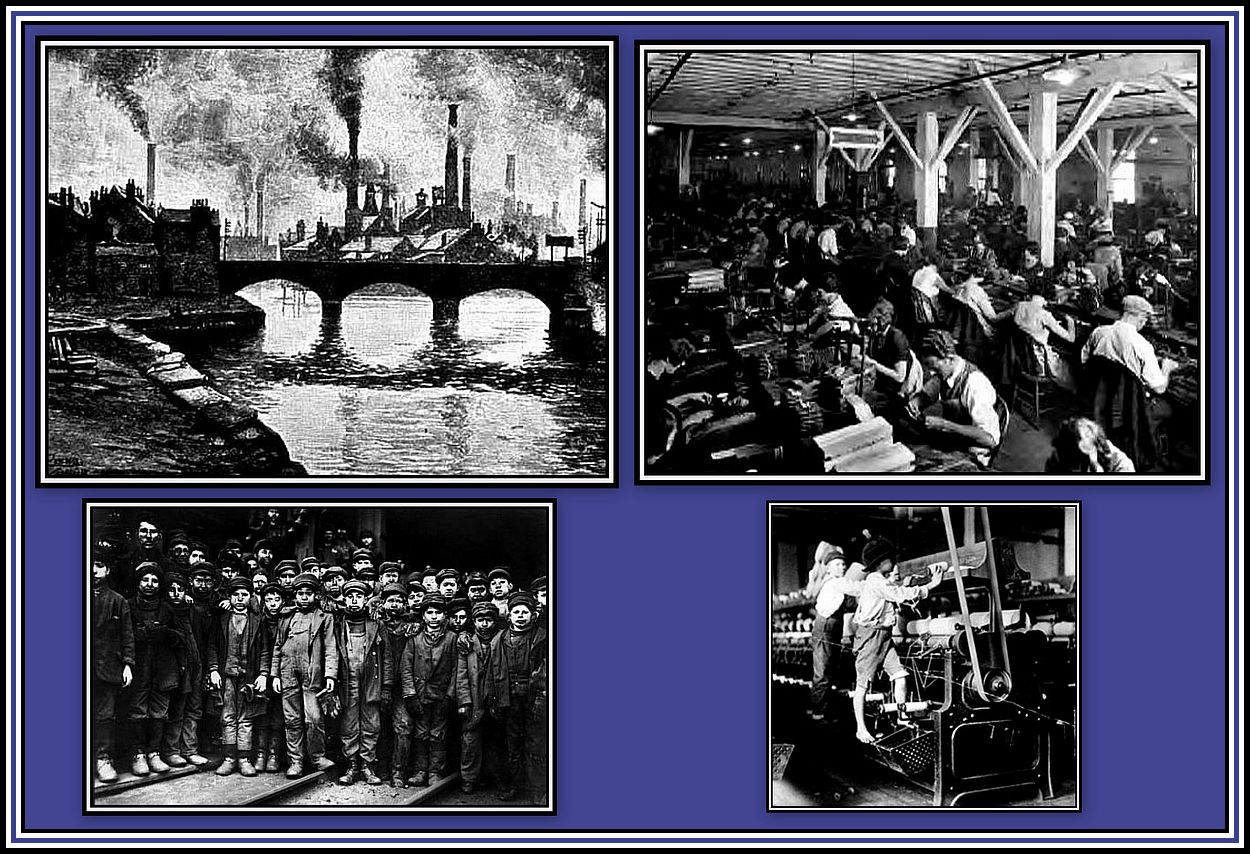 Scenes of the Industrial Revolution
Scenes of the Industrial Revolution
As industrialization progressed, a middle class formed who now found themselves with disposable income. This led to a wish to participate in fashion and a want for consumer goods leading to a retail revolution.
-oOo-
Prior to the advent of modern day shops and department stores, the wealthy were fettered by tailors and dressmakers who come to their houses whenever they needed new clothes. Shoe, slipper and boot makers had moulds of the feet of the landed gentry so that the client should not be unnecessarily bothered with too many fittings. Furniture and other goods were generally made by artisans employed by the land owner. With the coming of the middle class, establishments appeared where people were able to come and see what was available for sale i.e. shop.
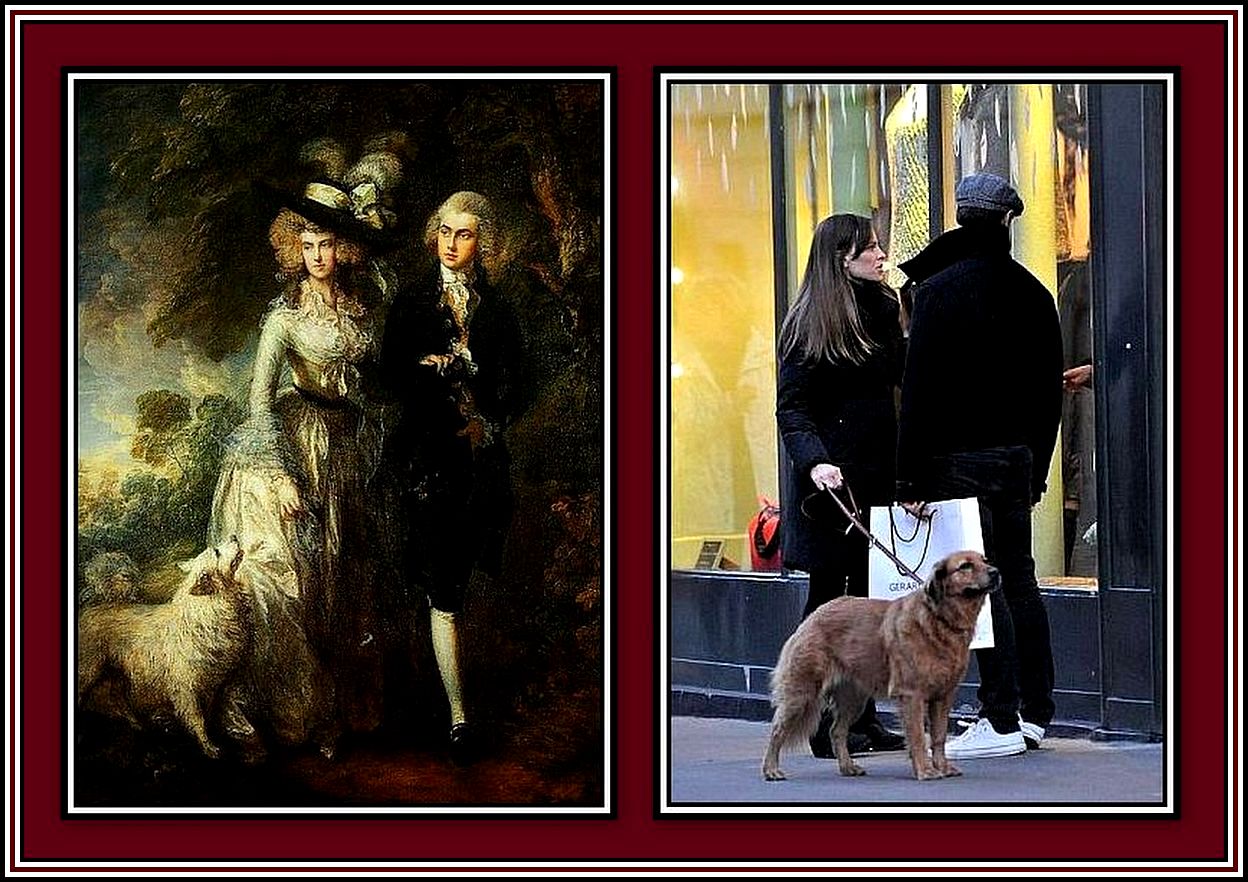 The Morning Walk and its modern day equivalent
The Morning Walk and its modern day equivalent
-oOo-
The concept of window shopping entered the public psyche and has grown to become a major leisure activity of those living in towns and cities. Until recently, a popular evening out for engaged couples would have been a stroll along the High Street of their town to window shop, as they dreamed and planed the decoration and furnishing of their future home. Although this activity is still popular today, most browsing is done in a Shopping Mall.
-oOo-
People such as Josiah Wedgwood apparently were quick to realise the value of marketing as a tool to influence taste and preference and so increase sales of his goods. Such practices led on to advertising, and whether we like to admit it or not, our taste and preference can be influenced by careful advertising.
I remember the Chanel No. 5 advertisement of the early 1980s that appeared on British television screens to coincide with the Christmas sales season. I recall the vivid colours, the pool, the shadow. I also recall another of Chanel’s advertisement, which used a wonderful tune sung by The Inkspots. These advertisements created, in an amazingly short period of time, a world of elegance amidst an atmosphere of surreal fantasy and seduction and left the viewer wanting to Share the Fantasy.
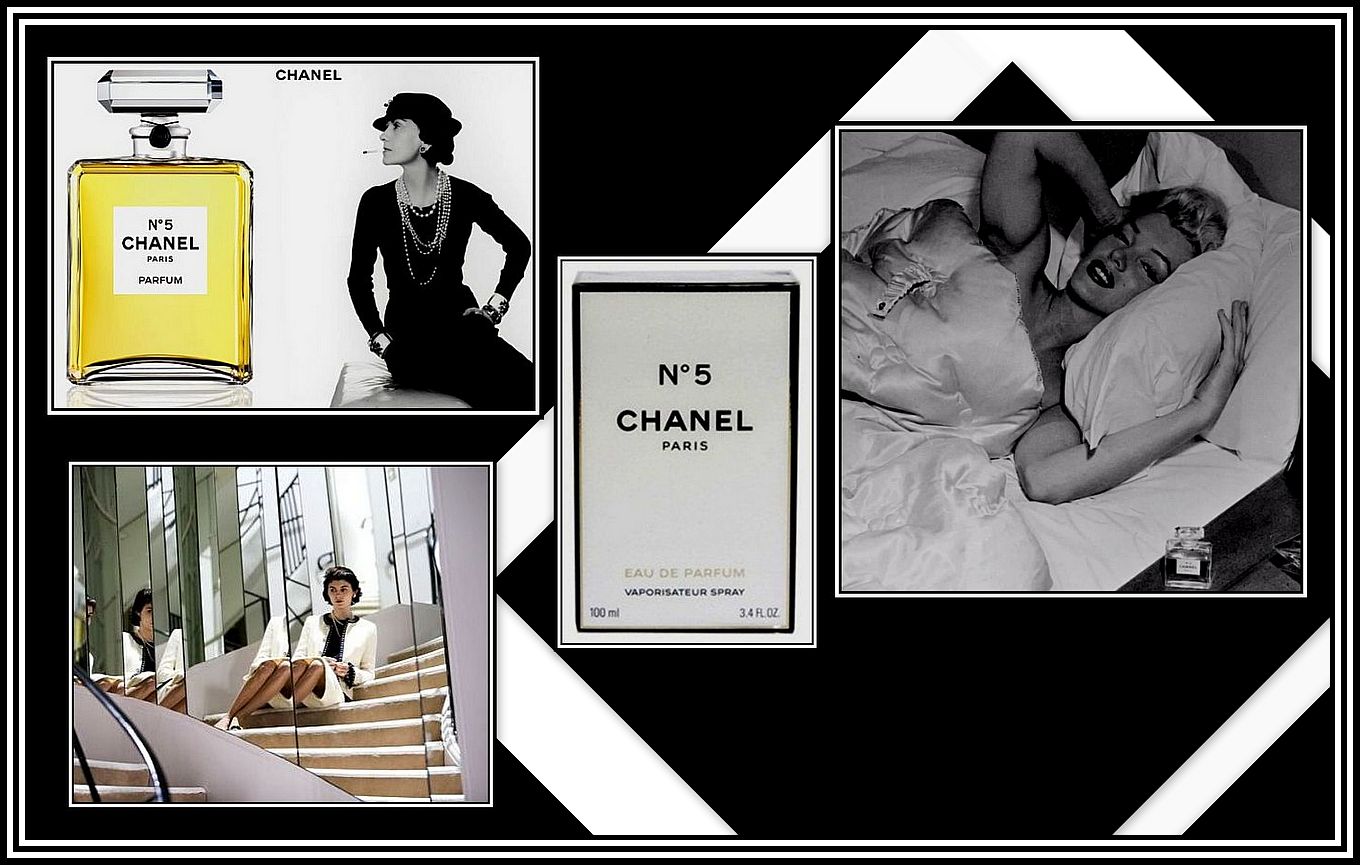 Share the Fantasy – Chanel No.5
Share the Fantasy – Chanel No.5
Top Left: Coco Chanel; Bottom Left: Audrey Tautou as Chanel in Coco Avant Chanel; &
Right: Marilyn Monroe dressed in five drops of Chanel No. 5
These advertisements were directed by Ridley Scott, the film director, and the words, Share the Fantasy, were uttered by John Huston (so I believe).
-oOo-
Prior to the Industrial Revolution, there were no shops as we know them today. However, as people moved to towns and cities, retail establishments began to grow up throughout the country. Bennett’s was established as an Ironmongers in 1734 and over the years grew into a department store, which is still open for business on Iron Gate in Derby. The emporium had a sweeping staircase and retained its ironmongery and was very popular with its customers. Apparently there were three staircases, two balconies and nooks filled with treasures. The store offered jewelry, earthenware and assorted additions for the garden. Today, the store still specialises in architectural ironmongery and sells to a number of building groups throughout the Britain.
-oOo-
Despite the founding of Bennett’s in 1734, the opening of the first department store is generally acknowledged to be that of Harding Howell & Co., which opened on Pall Mall in London in 1796. The emporium offered a range of good in different departments and apparently was very successful however it closed in 1820 when the partnership of the owners was terminated.
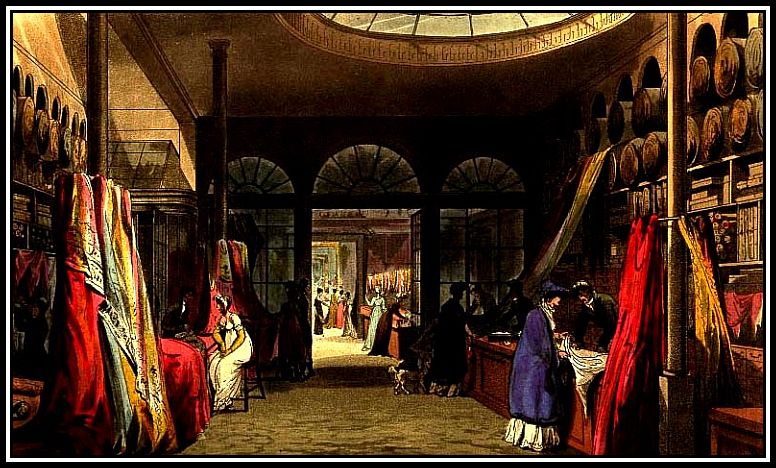 From Ackermann’s Repository of arts, literature, commerce, manufactures, fashions and politics (1809)
From Ackermann’s Repository of arts, literature, commerce, manufactures, fashions and politics (1809)
-oOo-
From the 1840s onwards, Department Stores, as we know them today, were being established in Britain, France and elsewhere around the world.
-oOo-
In Manchester, Kendal, Milne & Faulkner was established in 1836, but had been in business as Watts Bazaar since 1796. At one time, various departments of the store were present on both sides of the street, Deansgate, and were linked by a subterranean passage, known as Kendal’s Arcade, and which also had a tiled food hall decorated in Art Nouveau style. The store was acquired in 1959 by The House of Fraser which itself was founded in 1849 in Glasgow and has continued to be known as Kendal’s until 2005 when following extensive refurbishment the name was changed to House of Fraser Manchester.
-oOo-
The department store of Bainbridge’s in Market Street, Newcastle was first established as a drapery in 1838 when E.M. Bainbridge and W.A. Dunn entered into partnership. This establishment lays claim to being the world’s first department store in 1849 when the emporium had expanded to include twenty-three departments. A ledger was kept to record the weekly takings of each department which is stored away in the archives of the current owners of the store since 1952, the John Lewis Partnership.
-oOo-
Harrods was established in 1834. The world famous store on Brompton Road was built between 1894 and 1905 and occupies 20,000 square metres (five acres) with over 90,000 square metres (over one million square feet) of selling space with 330 departments. This makes it the largest department store in Europe.
-oOo-
Harry Gordon Selfridge established Selfridge’s in 1909 on Oxford Street in London and in doing so totally revolutionised shopping as it was then practiced. Mr. Selfridge began work at Marshall Field & Company in Chicago where he became head of retail sales and helped turn the company into a modern Department Store. When he built his store in London, he not only employed the business model of the Chicago store, but also based it on its architecture.
Selfridge was responsible for the introduction of a number of innovations in his approach to shopping, which were soon taken up by other store owners. Perhaps the most original of his ideas were to open his store to customers from all classes of society and to introduce the novel concept of shopping for pleasure. He also introduced the idea of sales, brought make-up and associated accoutrements to the front of the store and insisted on displaying goods in an attractive manner where they could be both seen and touched.
-oOo-
Liberty’s was first established by Arthur Lasenby Liberty on Regent Street in 1875 and offered ornaments, fabrics and objets d’art from the East and Far East. The store was a great success causing the company to expand into additional properties on Regent Street and went on to become one of the most prestigious in London. In 1924, a temporary shop was constructed to be used while the main emporium was undergoing renovation. This building is on Great Marlborough Street and is the Tudor revival-styled building that is known throughout the world and is synonymous with the name Liberty’s.
-oOo-
The oldest independent department store in Scotland is Jenner’s which is found on Princes Street. The establishment was founded by Charles Jenner and Charles Kennington and became part of the House of Fraser in 2005.
-oOo-
Austin’s in Derry, Northern Ireland was established in 1830 and also lays claim to being the world’s first department store.
oOo
CLICK HERE
To RETURN to
THE DEPARTMENT STORE HOME PAGE
——oooOOOooo——
ACKNOWLEDGEMENTS
I would like to thank Mr. Paul Bland for his help.
——oooOOOooo——
Click here to return to THE DEPARTMENT STORE HOME PAGE
——oooOOOooo——
Click here to GO to BENNETTS DEPARTMENT STORE
——oooOOOooo——
Click here to GO to SHOPPING WITH MY MOTHER;
——oooOOOooo——
Click here to GO to SHOPPING WITH MY FATHER;
——oooOOOooo——
Click here to return to the TABLE OF CONTENTS
——oooOOOooo——


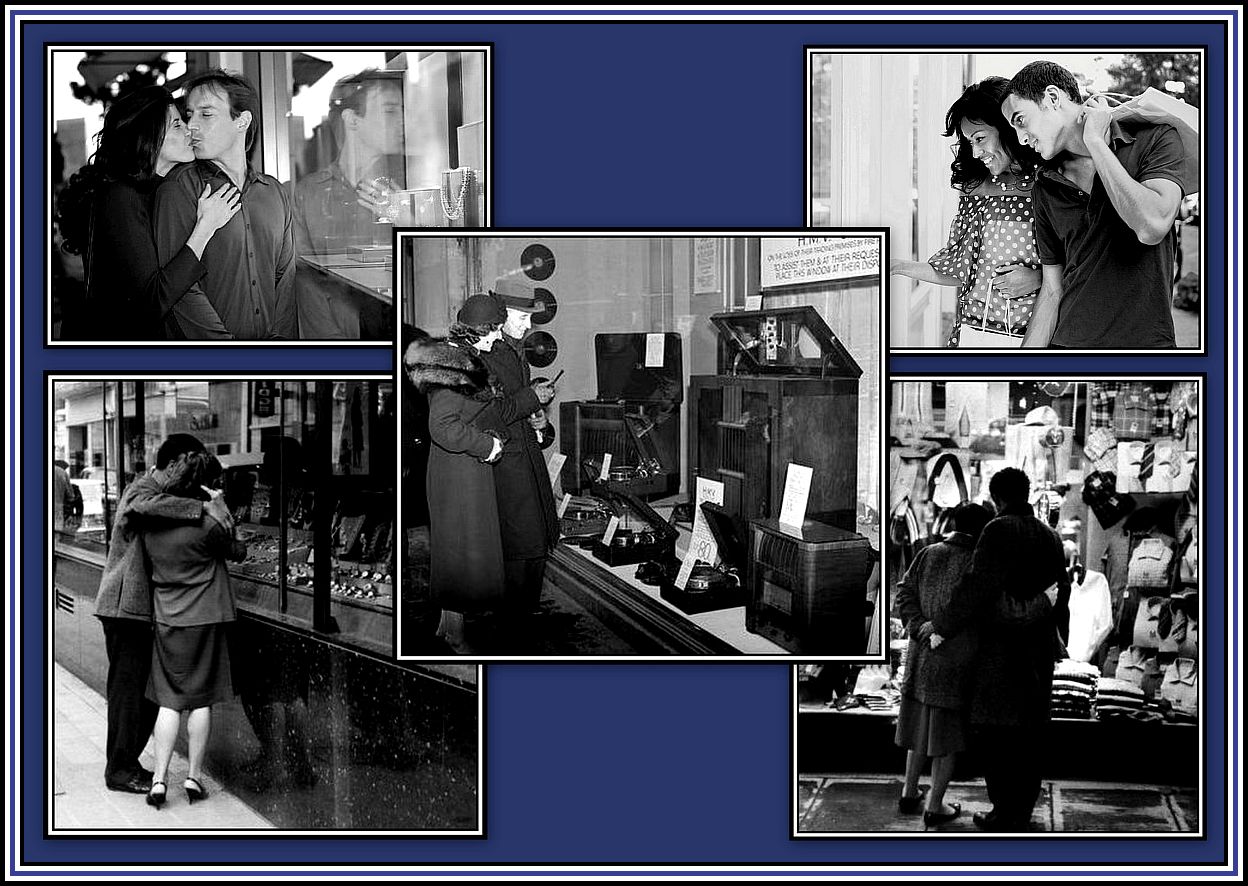
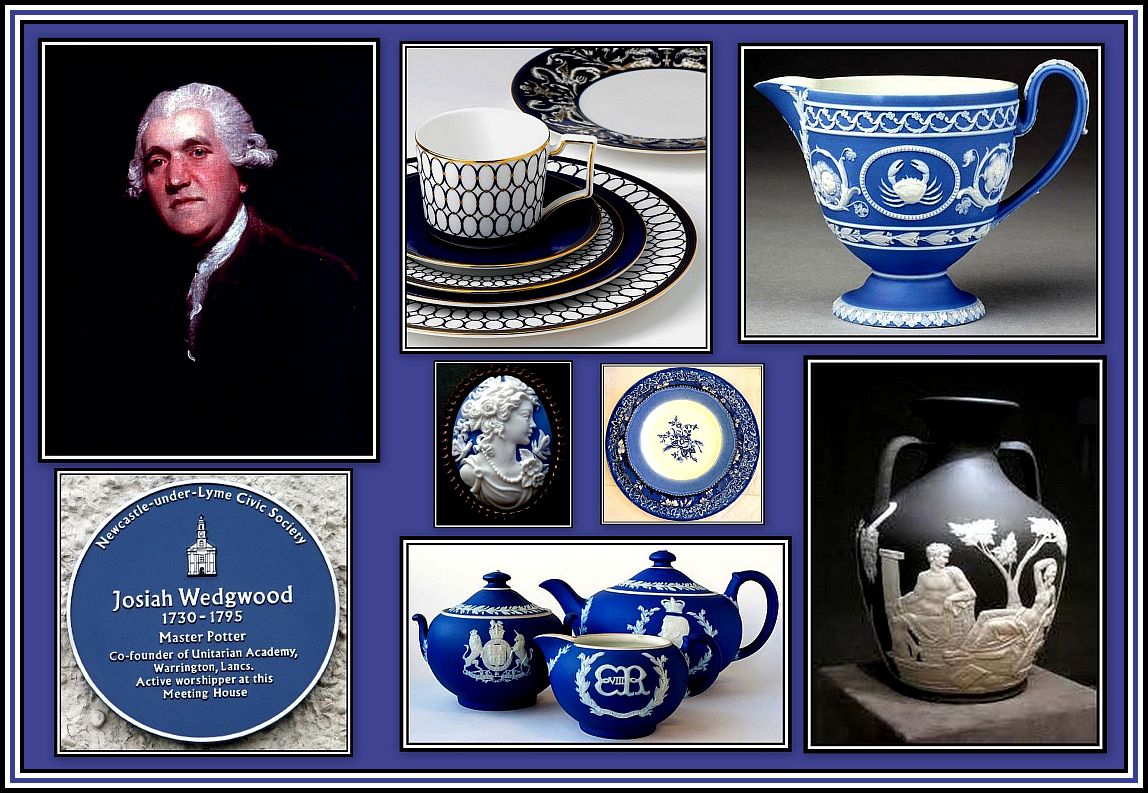
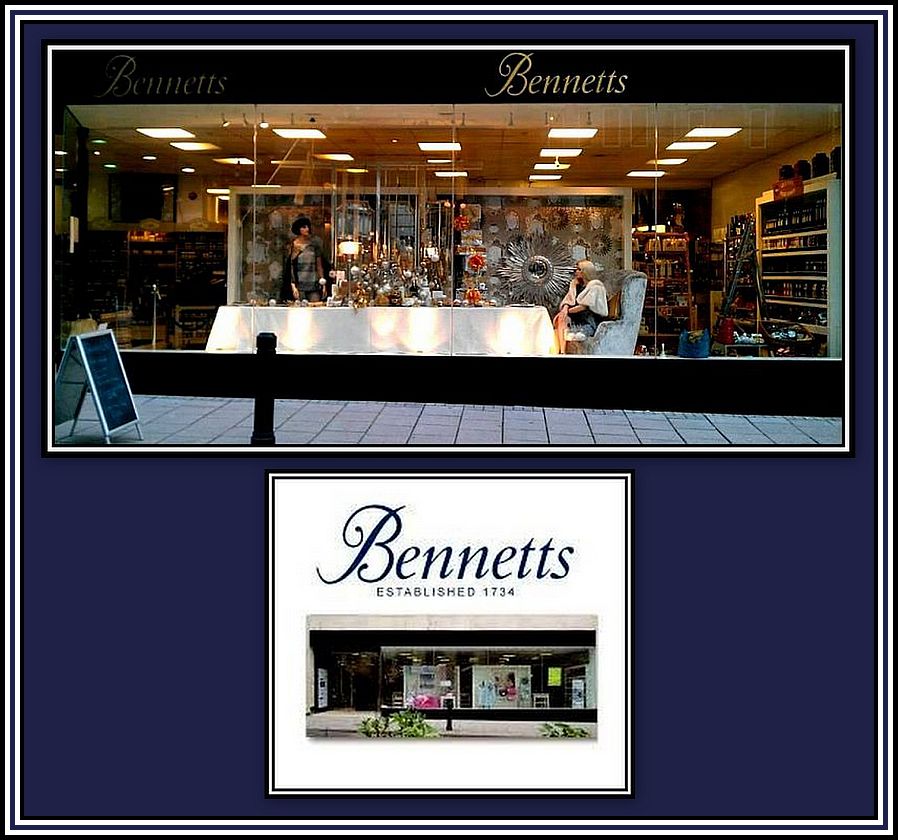
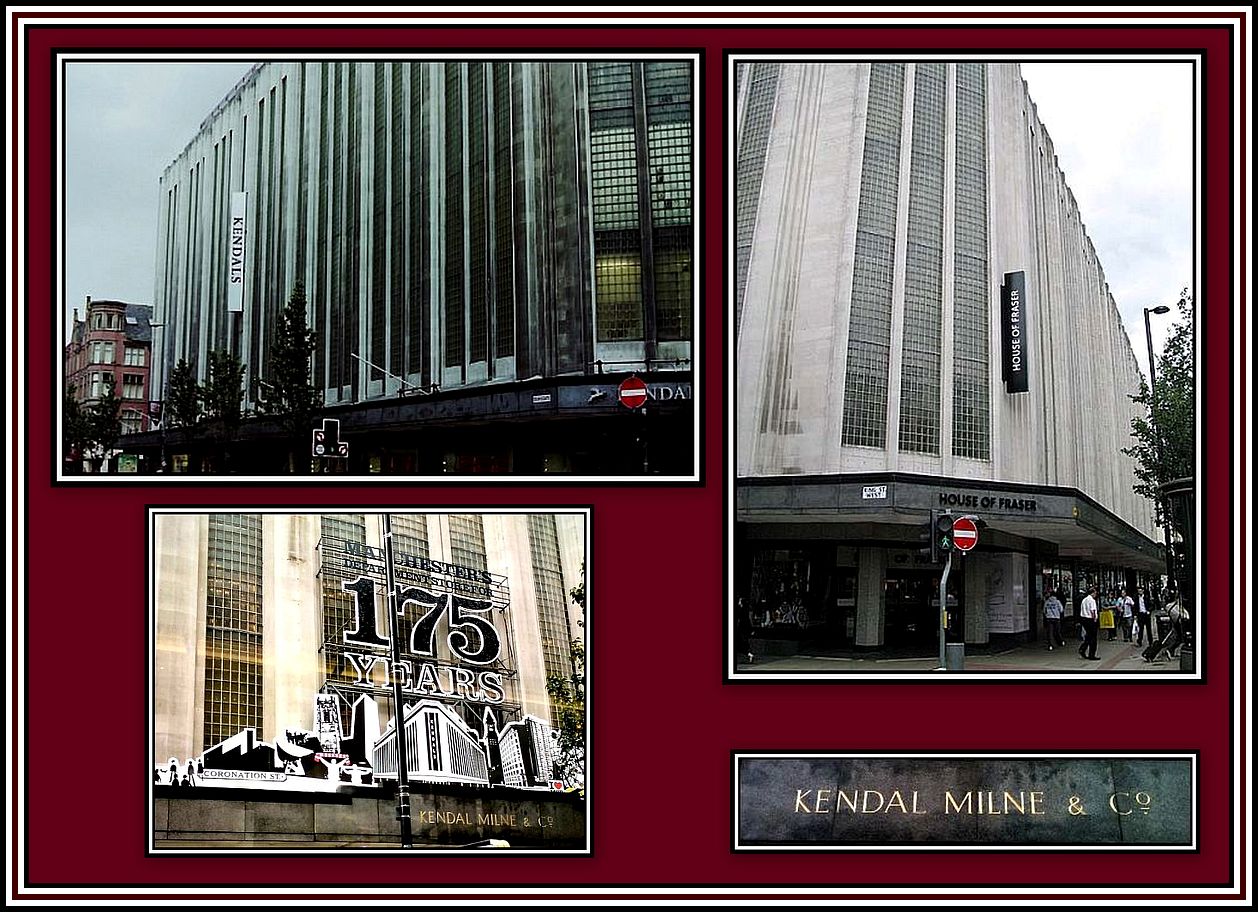
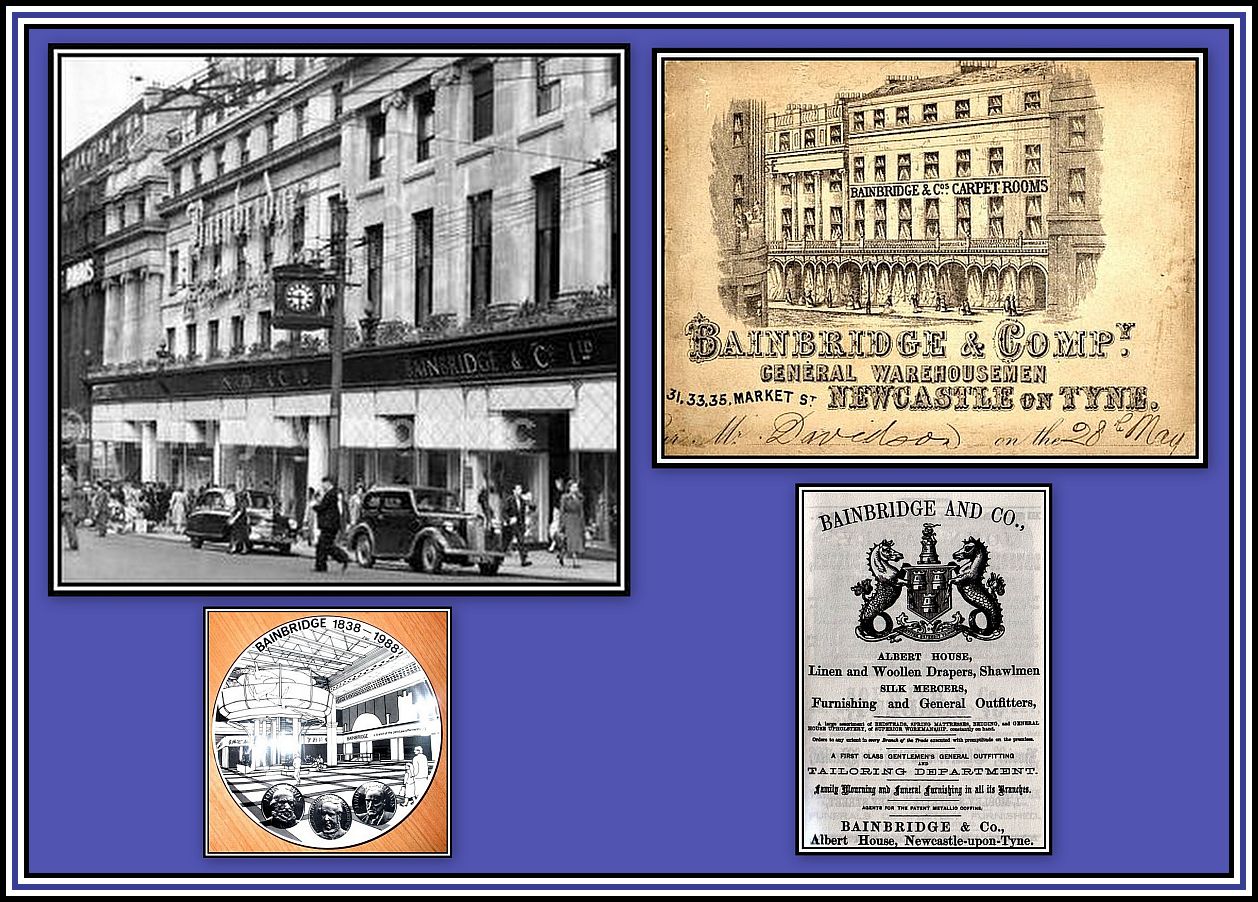
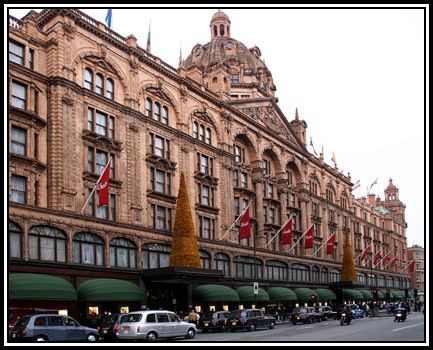
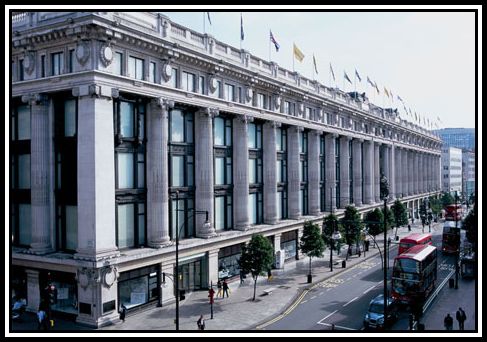
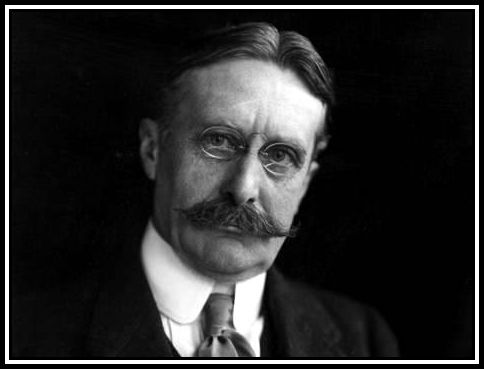
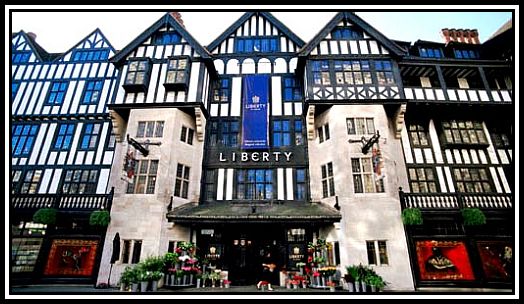
i found this very helpful especial in the college, i would like to see more coming.
i really appreciated the good work you do for the benefit of every who have had visit this web site.
thanks a lot for your help .
Thank you very much for your kind comments. Charles